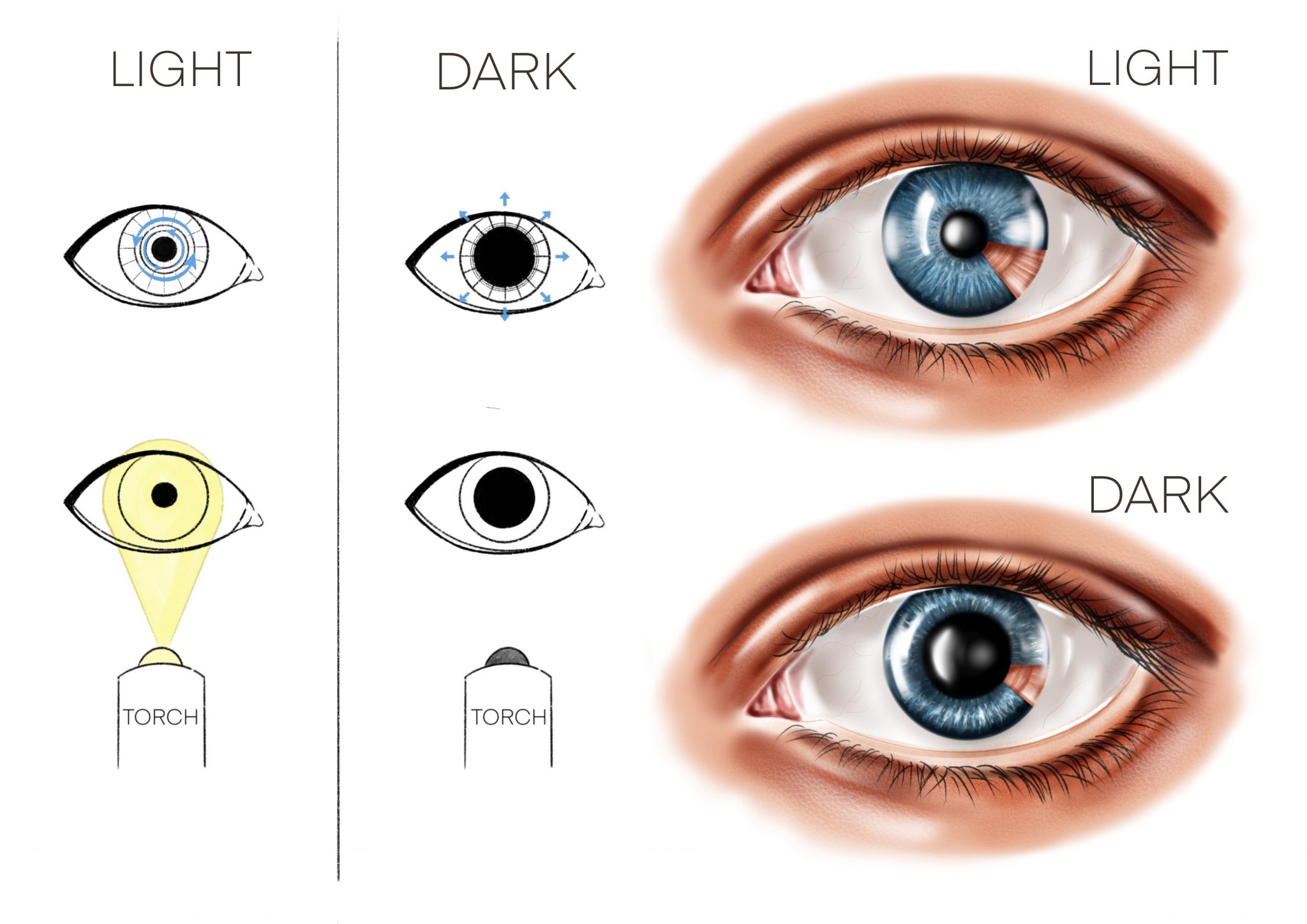
Light detected by the retina of your eye is converted to nerve impulses that travel down the optic nerve. Your pupil can range in diameter from 1/16 inch (1.5 mm) to more than 1/3 inch (8 mm). In dim light, your pupil expands to allow more light to enter your eye. Since most of the light entering your eye does not escape, your pupil appears black. The pupil is an opening that lets light into your eye. In a dimly lit room, open and close one eye while observing the pupil of the other eye in the mirror. Observe changes in the size of one pupil while you, or a partner, shine a light into and away from the other eye. You can see it shrink down too far, and then reopen slightly. Notice also that the pupil sometimes overshoots its mark.

Notice that it takes longer for your pupil to dilate than it does to contract. If you are using a large mirror, bounce the flashlight beam off the mirror into your eye. If you are using a small mirror, hold the flashlight behind the mirror and shine the light around the edge of the mirror into your eye. Notice the white of your eye, the colored disk of your iris, and your pupil, the black hole in the center of your iris. You may need to adjust the position of the magnifier to get the clearest image of your eye.

If you wear contact lenses or glasses, you may either leave them on or remove them.Īdjust your distance from the mirror until you see a sharply focused and enlarged image of your eye.

Look into the center of the magnifying glass with one eye. Place the magnifying glass on the surface of the mirror.


 0 kommentar(er)
0 kommentar(er)
